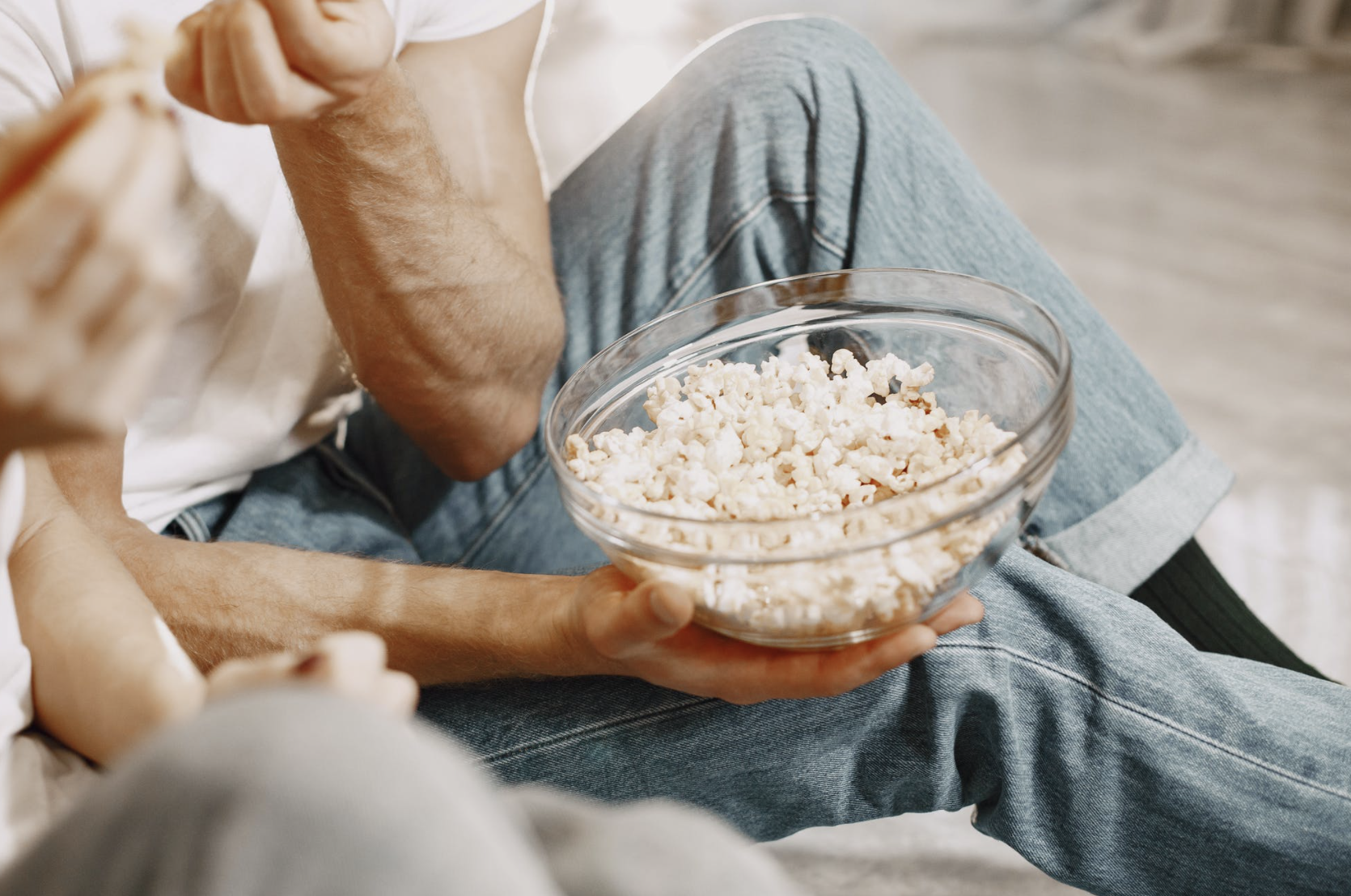
When I found out that popcorn is actually healthy, it blew my mind. Anyone else?
Of course, the crunchy, airy, movie snack has a bad rep because of all the butter (or butter flavouring – whatever that is…) and salt that it’s typically covered in. However, air-popped popcorn itself is actually a whole grain food that is high in lots of important nutrients including vitamins and minerals. It is very high in fibre, in particular, especially considering its low calorie count. When making popcorn at home, you have the freedom to customize your snack to be healthy, yet flavourful.
Here are some ideas: spices (ex. chili powder, cayenne, garlic powder, onion powder, cumin, paprika, cajun seasoning, dried dill weed), infused olive oils (ex. garlic herb, black truffle, butter flavour), nutritional yeast, parmesan, cocoa powder, coconut sugar… the options truly are endless.
Okay, that’s enough about popcorn. I could talk about that all day! We’re here to talk about fibre. So what’s so important about it anyway? Well, eating high-fibre foods can contribute to lowering the risk of developing type 2 diabetes, heart diseases, and colon cancer. There are two types of fibre, and most foods have a combination of both: insoluble and soluble. The former can help keep your gut healthy and prevent constipation. Soluble fibre aids in lowering your blood cholesterol level, controlling blood sugar levels, and it also helps keep you feeling full for longer.
But what exactly is it, and where does it come from?
Dietary fibre is the part of plant foods that the body is not able to digest. Fibre is found in veggies and fruit, whole-grain foods, nuts and seeds, and dried beans, peas and lentils. It is recommended that we consume more whole grain foods such as oats, quinoa, brown rice, and popcorn! This is because whole grains have more fibre, vitamins, and minerals than refined grains.
How to start adding more fibre to your diet!
It is recommended that men between 19 and 50 consume about 38g per day, and for women of the same age group, 25g. For men above 50, 30g is recommended while 21g is recommended for women above 50. If you want to add more fibre to your diet, it’s best to do so gradually in order to avoid excess gas, cramping and discomfort that can occur. You’ll also want to drink a healthy amount of water as well. To start adding more fibre to your daily food routine, you can make sure to eat a veggie or fruit at every meal and snack time, eat a breakfast of whole grains, add lentils, beans, or grains such as quinoa, bulgur, or wild rice to your meals, and add dried fruits, nuts, and seeds, to your yogurt and salads.
Leave a Comment
You must be logged in to post a comment.
0 Comments